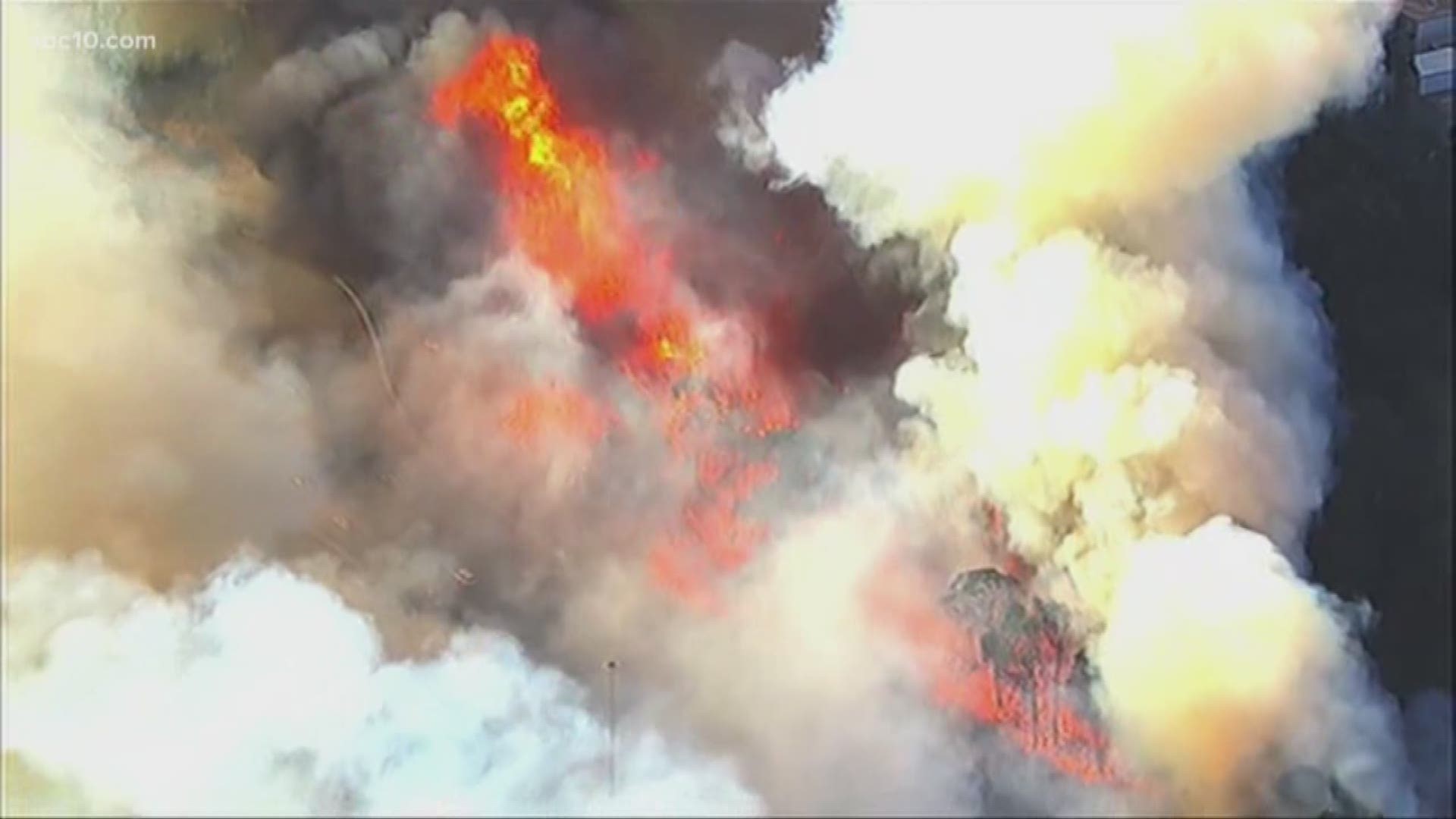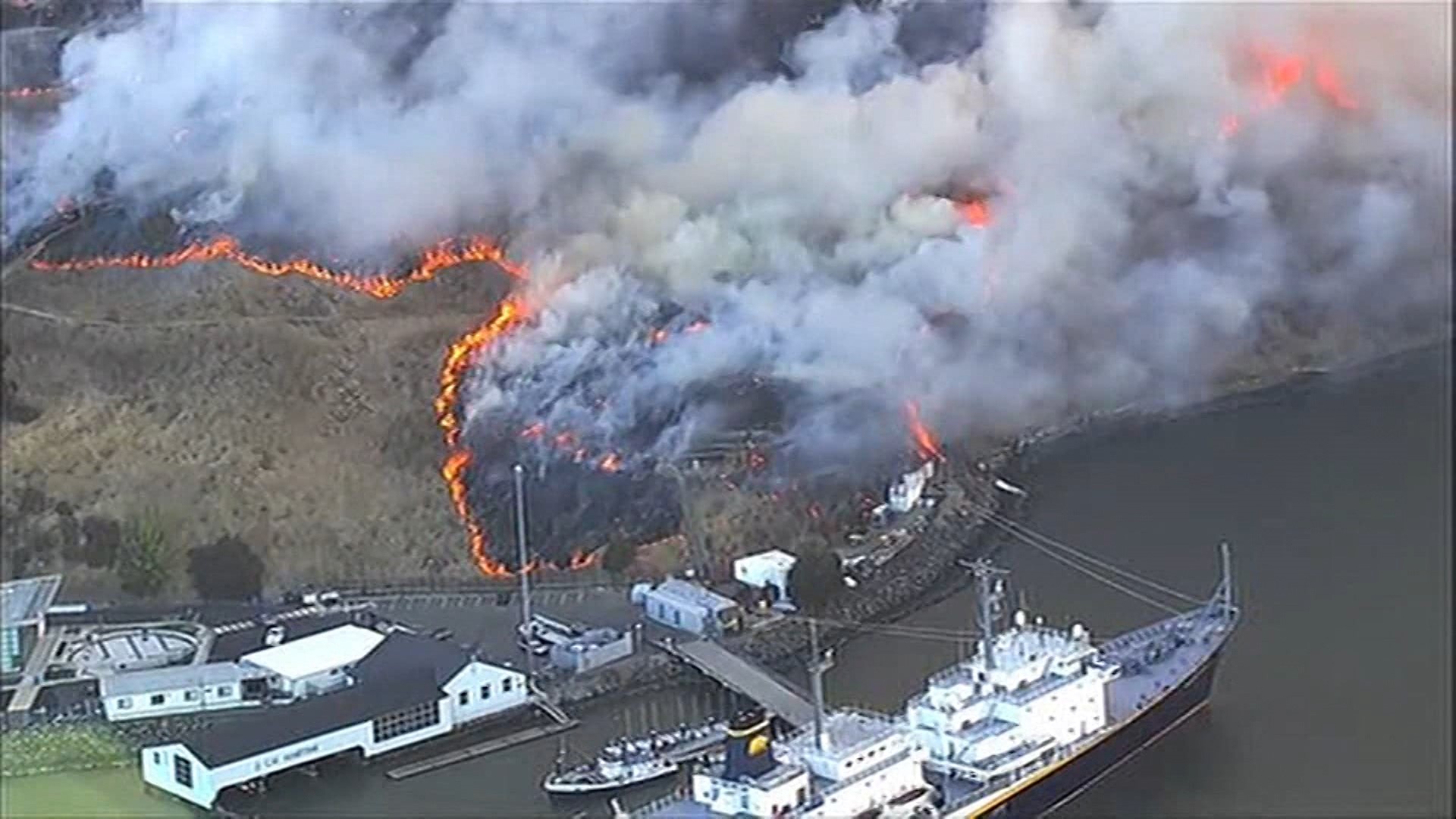CALIFORNIA, USA — Pacific Gas and Electric Company [PG&E] recently released its Public Safety Power Shutoff [PSPS] report to the California Public Utilities Commission [CPUC], detailing the reasons for the shutoffs, the results of those shutdowns, and where it can improve for next time.
The power shutoffs, which began in the early hours of Wednesday, Oct. 9, impacted more than 700,000 PG&E customers in 35 counties in Northern and Southern California. Since then, PG&E customers were hit with more power outages from the electric company.
The report itself clocks in at around 230 pages and acknowledges a few of PG&E's shortcomings during the Oct. 9 event.
Here are some of the key takeaways from the report:
23,000 customers did not receive PG&E notifications of the power shutoffs.
Approximately 23,000 customers (about 3%) out of the 729,000 customers de-energized did not receive notifications prior to de-energization. Approximately 500 of those customers were medical baseline customers.
At the same time, some customers received advanced notification of a possible shut off, but were ultimately not shut off, leading to some confusion and unnecessary alarm for those customers.
Nearly 100,000 more customers could have been affected by the outage.
During this event, PG&E determined that it could implement outages for 46 of the in-scope circuits by sectionalizing and de-energizing only portions of each circuit, as opposed to the full circuit. This reduced the number of customers impacted by this outage by 77,152 customers.
In the report, PG&E recognized that the scope of the Oct. 9 event is unsustainable and has plans to improve these systems for the future. Here are some of the key problem areas and PG&E's plans for improvement going forward:
Website
The problem:
"Requests to PG&E’s website increased by more than 250 times, from approximately 7,000 user requests per hour to more than 1.7 million user requests per hour, which impacted performance of the website and caused it to crash several times"
The solution:
"In direct response, PG&E has moved specific components and features of the website to cloud-based solutions that can scale up as needed […]These sites are being performance-tested and simulate an external load of up to 1 million users accessing the site in two minutes. This is more than double the number of users that accessed the site in two minutes during this event."
Call Centers
The problem:
"PG&E experienced surges in call volume aligned with customer outbound notifications that exceeded its plan. This, combined with the website capacity issues, created several spikes on Monday, Oct. 7, and Tuesday, Oct. 8, in calls to PG&E contact centers, which were overloaded. PG&E did not respond to PSPS calls soon enough, leaving customers with longer than desired wait times"
The solution:
"Going forward, PG&E will leverage the PSPS Call Strategy when a PSPS event scales to over 100,000 potentially impacted customers, as needed. This includes only accepting emergency calls related to PSPS, down wires, gas leaks, and outages when initial notifications are sent to customers for an active PSPS event. PG&E may also provide upfront interactive voice recordings messaging intended to allow customers to self-serve on the website and utilize multiple staffing levers to supplement existing personnel in the Contact Centers. These levers include: maximizing staffing, and training Billing and Credit Customer Service Representatives."
Community Resource Centers
The problem:
"It is understood that PG&E missed the mark on collaborating with the counties and tribes on where to locate the CRC facilities."
In all, approximately 5,300 visitors attended one of the 33 CRCs to use the services provided by PG&E, leaving many centers overcrowded and under-served.
The solution:
"Going forward, for all events, site selection will be a collaborative process with the counties and tribes. PG&E is developing a more effective plan for working with local governments to understand their needs and preferences for location of CRCs, while also updating criteria to include cell service availability."
Bridges, tunnels and BART
The problem:
"During this PSPS event, PG&E was able to successfully work with Caltrans, BART and other agencies to keep tunnels and tracks energized. However, this took place during the execution of the event."
The solution:
"PG&E needs to identify this infrastructure prior to an event."
Online Maps
The problem:
"Public safety partners shared feedback that the outage maps did not always reflect the clear boundaries of the PSPS outage area."
The solution:
"In the future, PG&E will be drawing tighter polygons, making Geographic Information System experts available to visit the County Emergency Operations Centers or assist with mapping questions to provide a more seamless data transfer for County EOC/GIS needs, and developing the capability for counties and tribes to use the PG&E address checker tool with batches of facilities."
PG&E will make the new benchmark for restoring power 48 hours.
During the PG&E power shutoffs, customers were told that outages could last three to five days after the “all clear” weather signal was given. PG&E reports that it "recognizes that five days as a benchmark is not acceptable. For this PSPS event, the majority of customers were restored within 48 hours, which will be the benchmark going forward."
As of Oct. 22, PG&E has received several complaints from the California Public Utilities Commission.
- Questions about programs to purchase generators and a request that PG&E pays for the customer’s generator.
- Feedback that medical baseline notifications are too frequent and wanted calls to stop.
- Questions related to why the power was shut off and when power would be restored.
- Request for credit during the shut off period.
- Two complaints that the customer did not receive notifications prior to de-energization .
- Feedback that the website did not work during the event.
Post-shutoff, the damages and hazards found in affected areas aligned with PG&E’s expectations.
There were damages to PG&E power lines that could have hypothetically caused a fire, including downed power lines and branches tangled in power lines. According to the report, these were the damages that occurred during the wind event:
69 cases of damages:
- 26 where vegetation was identified as the cause
- 43 cases of wind-caused asset damage or where the cause could not be identified
51 cases of hazards:
- All were vegetation-related, such as branches found lying across conductors, which were cleared prior to re-energizing


PG&E successfully launched its first pilot Resilience Zone during the shutoff.
A Resilience Zone is a designated area where PG&E can safely provide electricity. PG&E isolates electricity from the wider grid and re-energizes it using a temporary mobile generator at a pre-installed hub during an outage. During the Oct. 9 shutoffs, PG&E was able to use its first pilot Resilience Zone in the Angwin area in Napa County.
PG&E "energized a sectionalized area of the town that included the local fire department and student housing of Pacific Union College" during the PSPS event.
According to the report, "These pilot efforts are paving the way for PG&E to scale up its ability to safely provide power continuity using temporary generation during PSPS events to more communities, and thereby reduce the footprint of PSPS."
FREE ABC10 APP:
►Stay In the Know! Sign up now for ABC10's Daily Blend Newsletter




